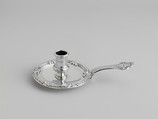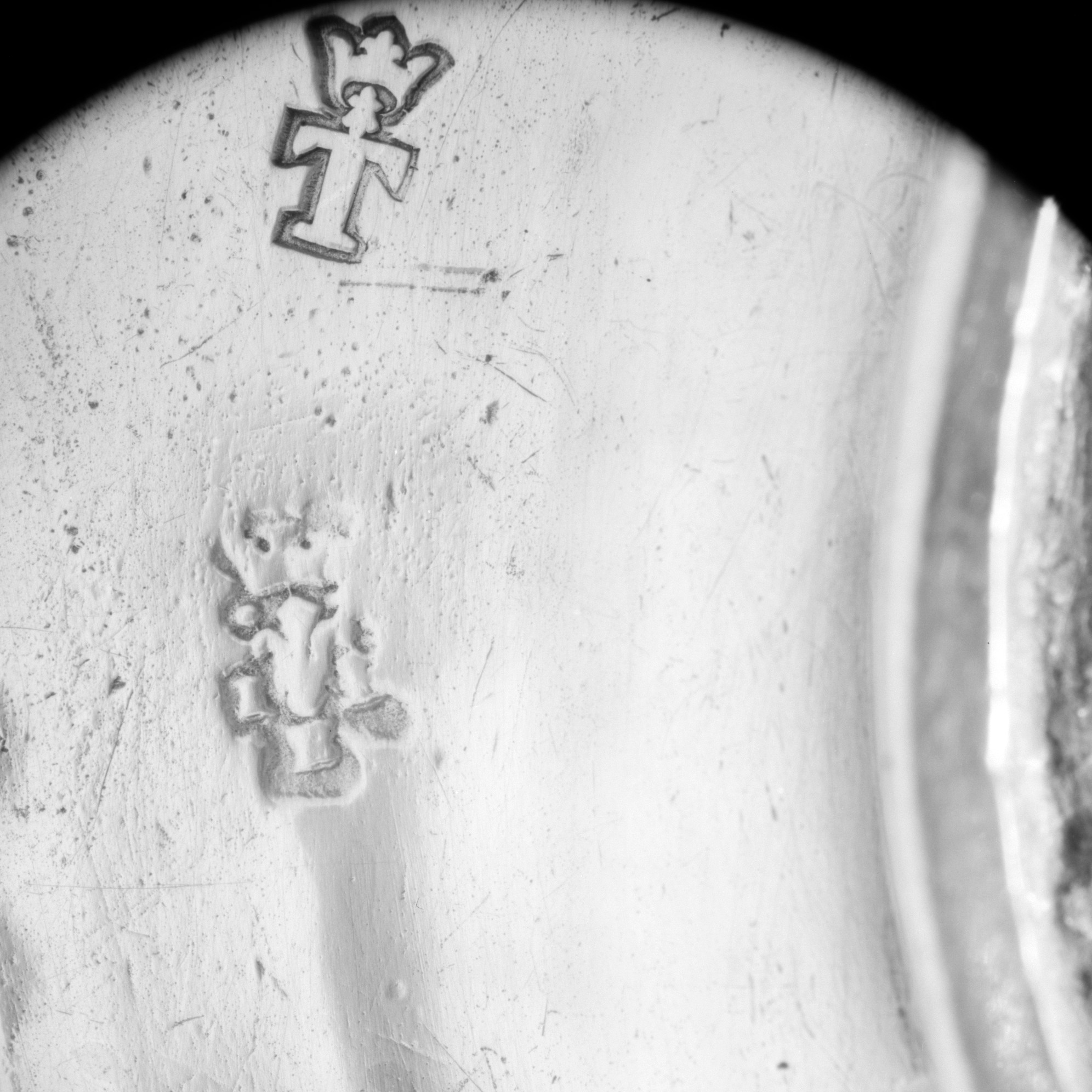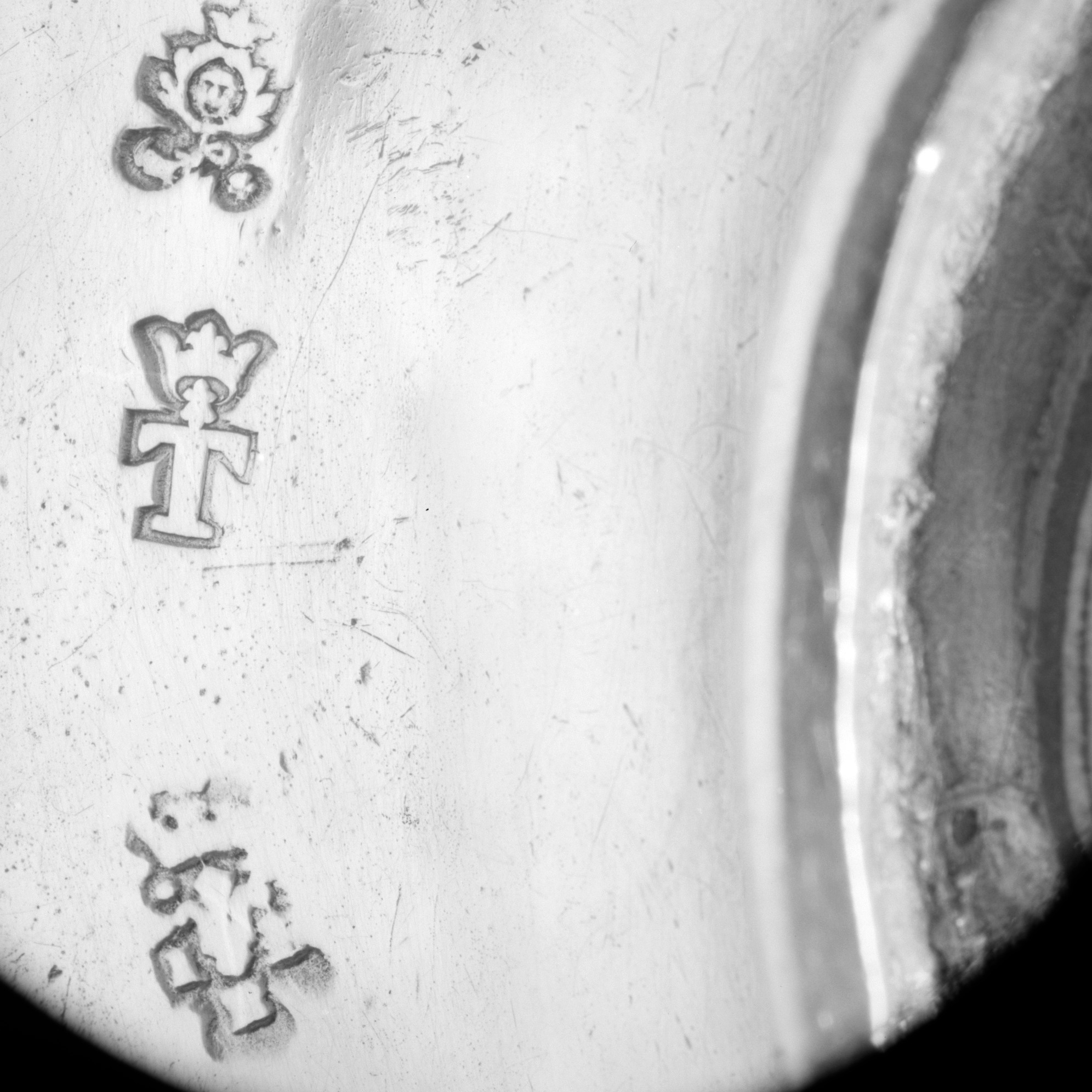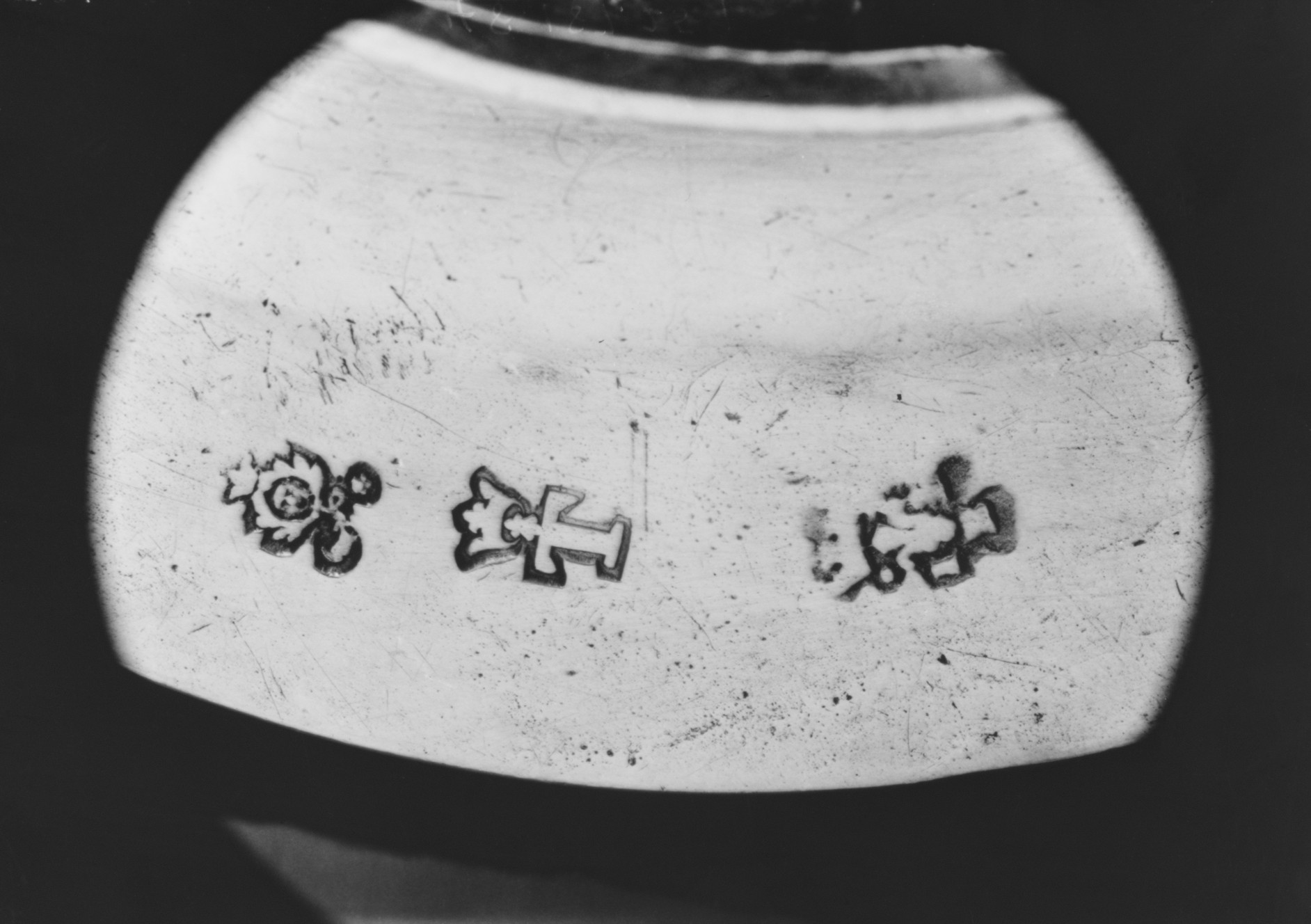Chamber candlestick
Not on view
In the era before gas lighting and electricity, candles played a principal role in illuminating the domestic interior. Hand or chamber candlesticks were designed to be portable for carrying around the house and to light one’s way to the bed chamber. Such pieces were usually made with an ample handle and pan or saucer to catch the melting wax.
Made in 1732–33 by Jean-Baptiste Boullemer in Rennes, the design of its handle, consisting of a female mask, husk motifs and an acanthus leaf, is nearly identical to that of 48.187.260, which was created eight years later by a silversmith in Troyes.
Daughter of one of the founders of the Weyerhaeuser Timber Company, Catherine D. Wentworth (1865–1948) was an art student and painter who lived in France for thirty years. She became one of the most important American collectors of eighteenth-century French silver and on her death in 1948 bequeathed part of her significant collection of silver, gold boxes, French furniture, and textiles to the Metropolitan Museum. The collection is particularly strong in domestic silver, much of it provincial, as demonstrated by this chamber candlestick.
Due to rights restrictions, this image cannot be enlarged, viewed at full screen, or downloaded.
This artwork is meant to be viewed from right to left. Scroll left to view more.





